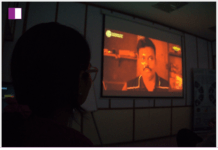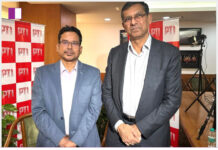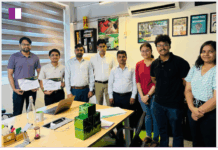AdTech and MarTech function differently, but eventually have a common objective, say our guest authors.
By integrating AdTech and MarTech, marketers can track customer interactions across different touchpoints, and use the data to deliver more relevant and personalised content to each individual. Incorporating MadTech in the marketing strategies can help the CMOs to gain a more comprehensive understanding of their customers and their behaviour across various touchpoints such as social media, email marketing and website interactions.
This allows marketers to deliver more personalised and relevant content to each individual customer, which can lead to higher engagement and conversions.
Advertisers, marketers and technology developers today are all facing one common problem. And, this issue is surrounding the ‘consumer’. Do marketers really understand the consumer well, is a question.
Data generated and harnessed from various sources, may not be talking to each other in congruence. As a result, the communication to the audience may not be delivered with consistency and in the best personalised manner. Surely, this has an impact on the customer expectations and experience with the brand.
To really dig deeper into the problem, we need to understand how the marketing and advertising departments function. And, one of the key reasons is their working in silos. Also, there exists a technological convergence gap between AdTech and MarTech, and their reliance on different data sets to craft strategies.
All these shortcomings can be addressed with the concept of MadTech. The word was first coined by David Raab, who conceived the idea of how the key assets of marketing, advertising and technology can be combined to deliver personalised and consistent customer, as well as brand experience.
AdTech and MarTech function differently, but eventually have a common objective. AdTech utilises third-party data to a large extent, whereas MarTech is supported by first-party data, collected by the brand directly.
The targeting too may be varied due to this. Personalisation is superior with MarTech, for owned media (company website, email, etc.), and targeted when it comes to AdTech for paid media (paid search, ads, display, social networks, etc.).
AdTech facilitates real-time bidding and behavioural targeting with its customer journey mapping, whereas with MarTech, detailed multi-step campaigns can be designed and customer journey can be mapped with advanced attribution. Convergence with MadTech can get the best of both these components and better manage the overall return on marketing investments.
The opportunities with MadTech are sizeable, and it will need attention to many factors. Just to name a few, simplifying the technology stack, focussing on customer data and developing a unified view of the customer, understanding of all customer touchpoints across media (paid, owned, earned) and its data influences, re-imagining the marketing department to bring cohesiveness in thought and action, and integrating planning, execution and measurement.
A focussed MadTech transformation strategy can help advertisers with razor-sharp decision-making on where to invest the marketing budgets and garner the best possible RoIs. At the core will always be the customer – the experience delivered to him at all touchpoints, is enhanced and hyper-personalised.
Leveraging MadTech to understand, profile and segment consumers is also very critical for designing focussed communication strategies.
Technology also helps us to track a consumer’s journey and plan specific communication interventions at every stage, to improve conversions.
Apart from improving communication, many marketers use the insights on consumer behaviour to improve consumer experience across touchpoints. The intelligence from MadTech also is being leveraged to learn about consumer trends and shifting market trends, to improve products and services.
MadTech enables real-time view of marketing campaigns and plan course corrections based on consumer responses and engagement with the campaigns, and help improve efficiencies and RoIs.




































